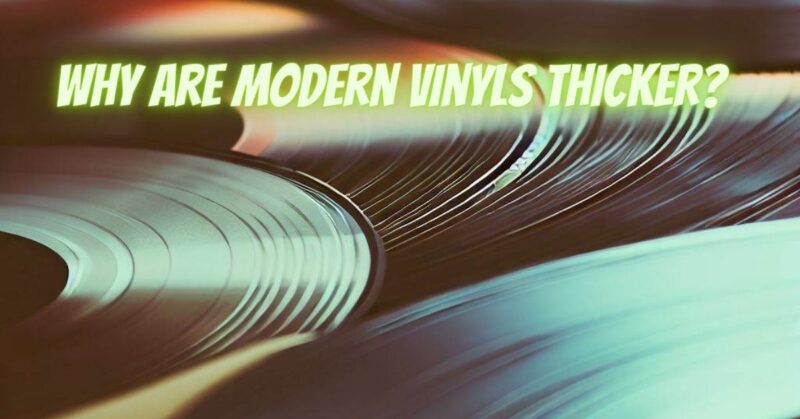Vinyl records, once considered a relic of the past, have made a remarkable resurgence in recent years, captivating both audiophiles and music enthusiasts alike. While vinyl records have been around for decades, keen observers might notice that modern vinyl records tend to be thicker than their predecessors. This shift in thickness is not just a random occurrence; it’s a result of a blend of technological advancements, evolving consumer preferences, and improved manufacturing techniques.
The Vinyl Resurgence: A Brief Overview
Vinyl records, which were the primary medium for music distribution until the rise of compact discs (CDs) in the 1980s, saw a decline in popularity as digital music formats took over. However, around the mid-2000s, vinyl records began experiencing a revival. Music enthusiasts started to re-embrace the tactile experience and warm sound quality that vinyl records offer. This revival created a demand for high-quality vinyl records, and manufacturers responded by adapting their processes to meet these expectations.
Thicker Vinyl: A Quest for Enhanced Sound Quality and Durability
One of the key factors driving the trend of thicker vinyl records is the pursuit of enhanced sound quality and durability. Thicker vinyl records have the potential to offer improved audio fidelity due to their increased groove depth. A deeper groove can accommodate more intricate sound information, allowing for a more accurate reproduction of the music. This is particularly important for audiophiles and enthusiasts who prioritize a true-to-life listening experience.
Additionally, thicker vinyl records tend to have fewer issues related to warping and distortion. A thicker record is inherently more stable and less susceptible to warping, which can occur due to temperature and humidity changes. This durability is vital for both listeners and collectors, as it ensures the longevity of the record and preserves its playback quality over time.
Manufacturing Advances
The increase in vinyl record thickness can also be attributed to advancements in manufacturing techniques. Modern vinyl record manufacturers have access to improved machinery, better quality control processes, and more precise cutting techniques. These advancements allow for the creation of thicker records that maintain consistent groove dimensions and depths across the entire surface.
In the past, vinyl records were typically made using older methods that might not have produced records as uniform in quality. As manufacturing technology has evolved, it has become easier to consistently produce records with the desired attributes, such as thickness, groove depth, and surface flatness.
Consumer Expectations and Collectibility
The resurgence of vinyl records is not solely about the audio quality; it’s also closely tied to the overall experience and the collectible nature of physical media. Thicker records can feel more substantial and valuable to collectors. The tactile experience of holding a heavier, thicker vinyl record can add to the overall enjoyment of the hobby. In a digital age, where intangible music files dominate, the physicality of vinyl records is a significant part of their appeal.
The trend toward thicker vinyl records is a multi-faceted phenomenon that arises from a combination of factors, including the pursuit of enhanced sound quality, improved manufacturing processes, and changing consumer preferences. As vinyl records continue to make their mark in the music industry, manufacturers are likely to continue refining their techniques to produce records that offer the best possible listening experience for enthusiasts and collectors alike. Whether for the audio quality, the tactile experience, or the nostalgia factor, the resurgence of vinyl records has brought a renewed appreciation for this enduring medium.


